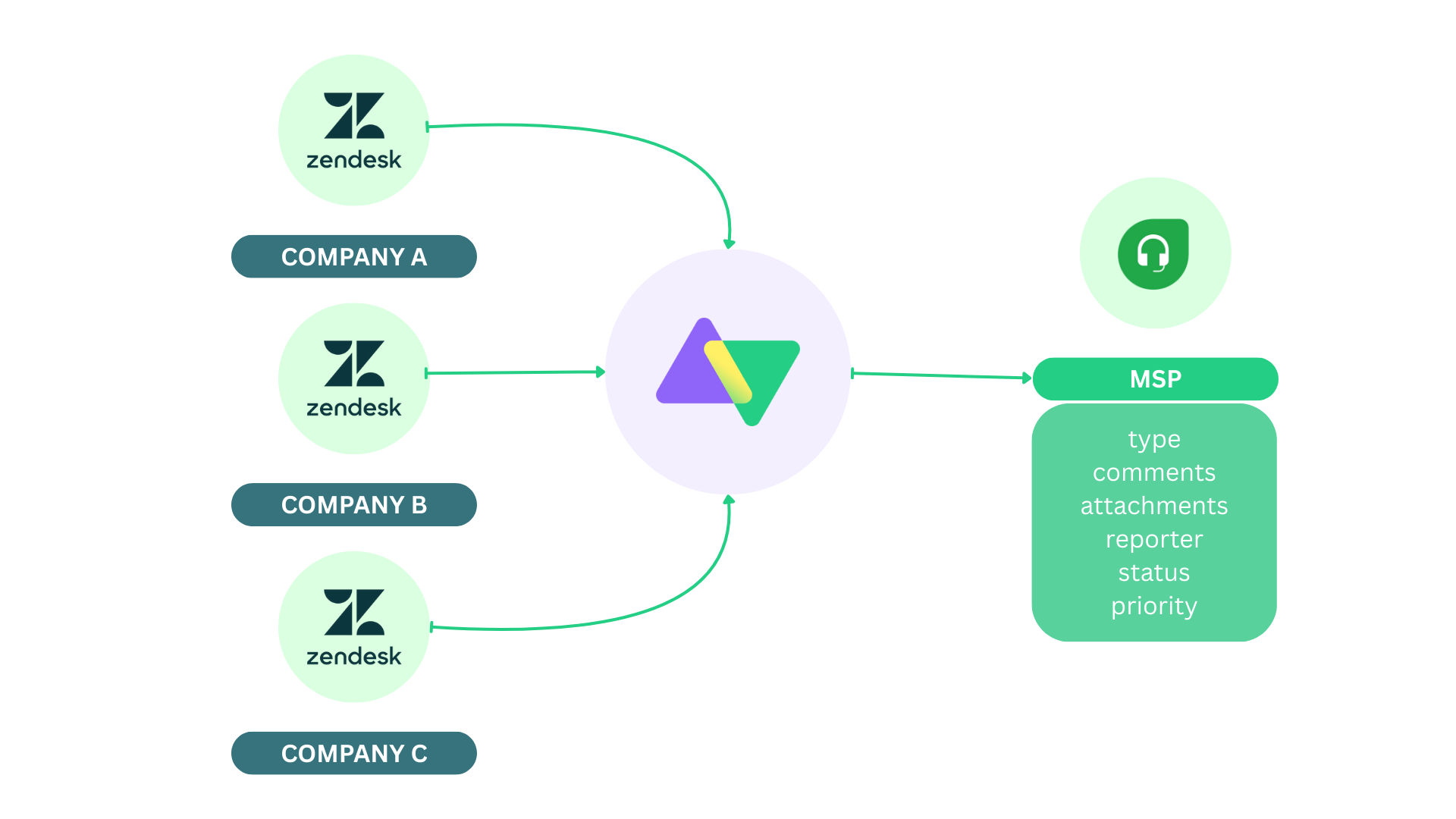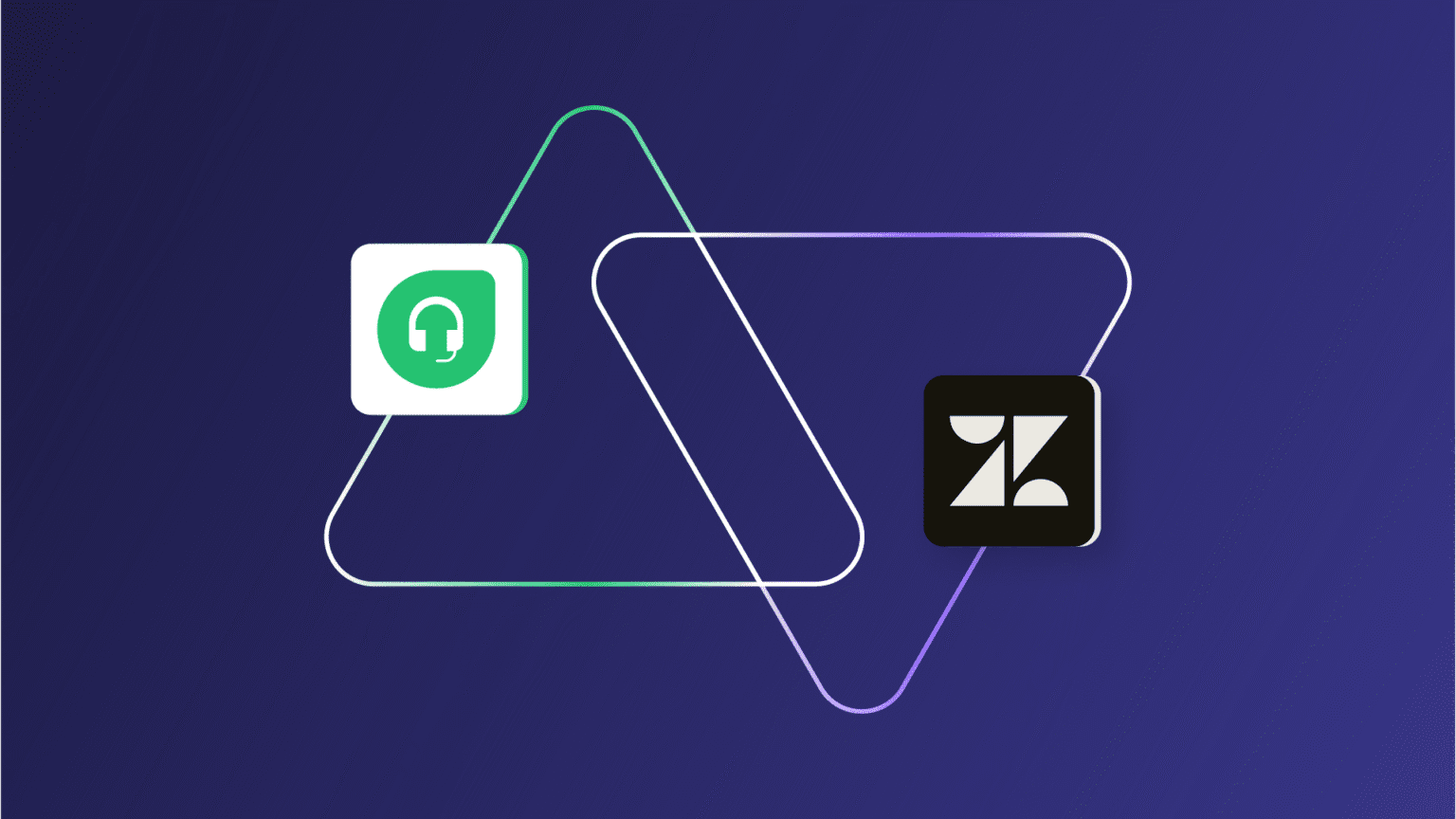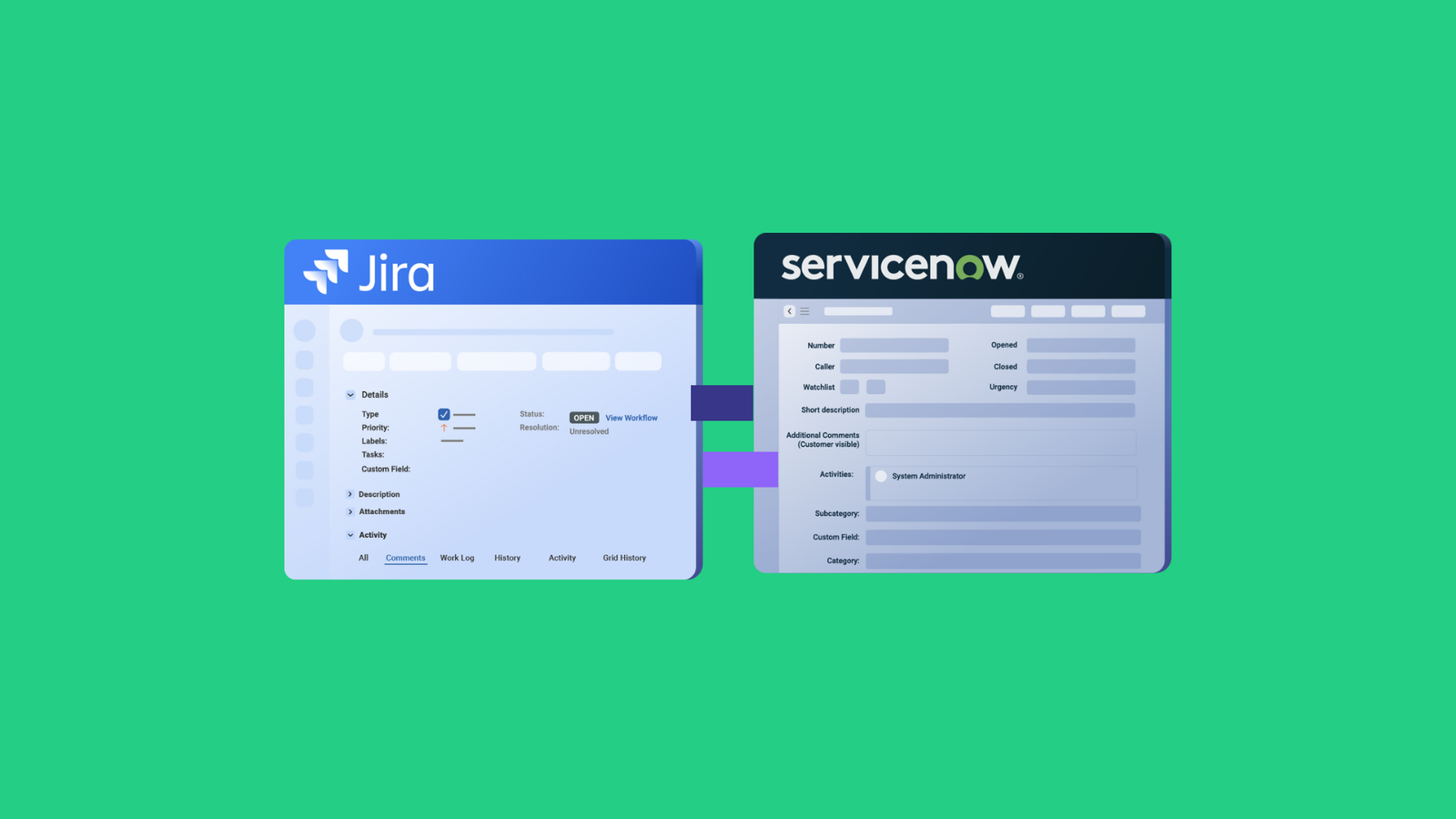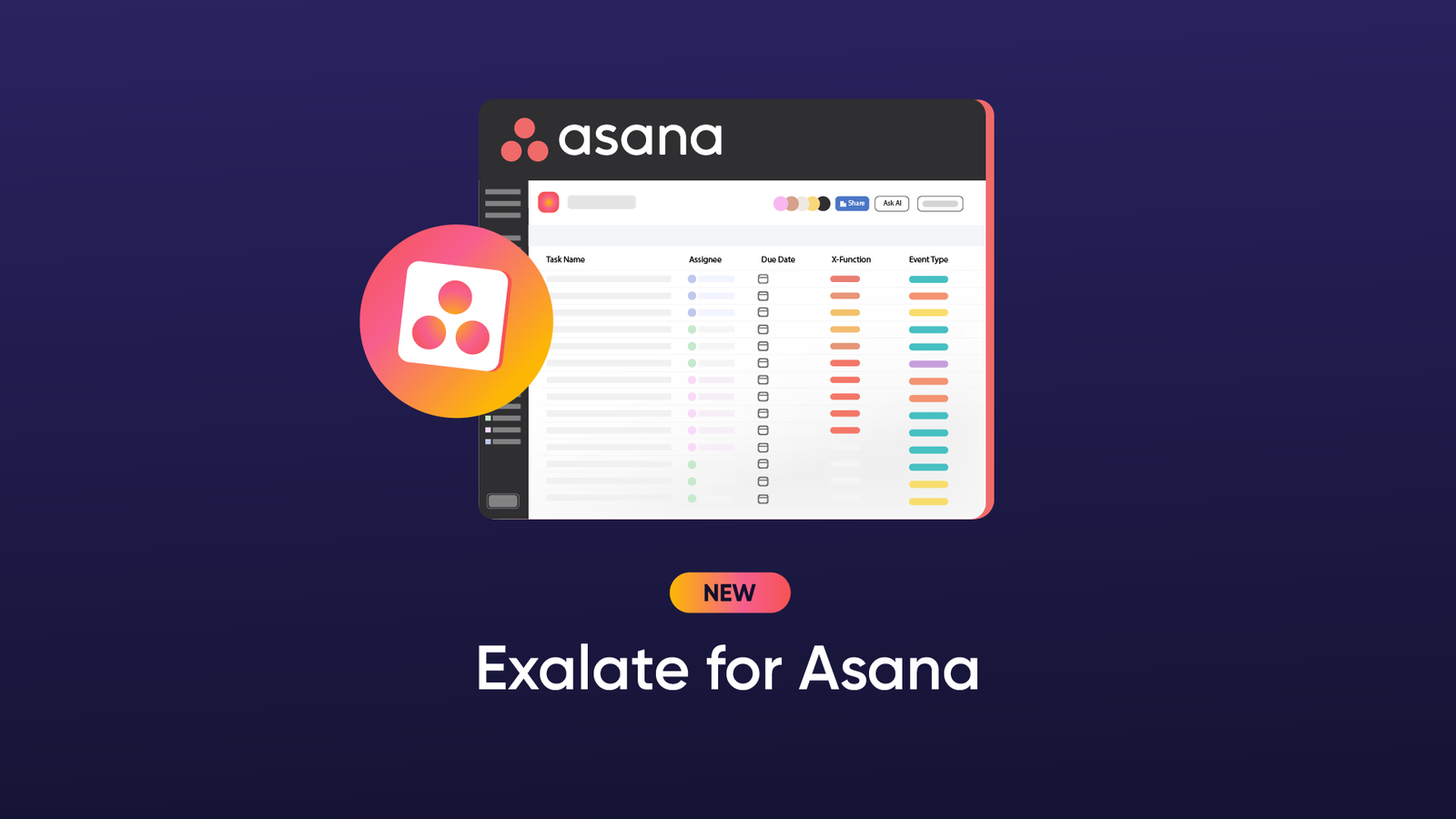Help desk applications help organizations understand the customer’s concern before escalating the issue to the right department.
To that end, managers can integrate Freshdesk and Zendesk as part of the same customer support ecosystem.
One of these reasons is to ensure that teams on both platforms have the same historical and real-time context in order to deliver accurate customer service.
And that’s where the magic of Freshdesk Zendesk integration comes in.
To get both systems to interact and exchange relevant information, you need to connect them with a third-party integration solution or custom connector.
This guide will show you how to set up a Zendesk to Freshdesk integration using a middleware solution called Exalate.
What is Freshdesk Zendesk Integration?
Freshdesk Zendesk integration is the process of connecting both systems to bridge the compatibility gap and ensure smooth transfer of data between them.
When teams integrate Freshdesk with Zendesk, there is an expectation that either side wants to stay in their own system while obtaining access to all key information from the other side.
So let’s say a logistics company using Freshdesk wants to outsource customer support to a managed service provider (MSP) using Zendesk.
An integration solution can help both sides connect their help desks in order to share updates and monitor progress in real time. The contents of any ticket coming into Zendesk will immediately be transferred to Freshdesk as an incident, problem, or feature request.
In a multi-platform integration scenario, the Freshdesk ticket will further be escalated to the development team using Azure DevOps or Jira Service Management. All updates will be received in real-time.
What are the Benefits of Zendesk to Freshdesk Integration?
Organizations opt to integrate help desk applications like Freshdesk and Zendesk for the following reasons:
- Help desk integration increases transparency, operational efficiency, ticket resolution accuracy, and decision-making speed.
- Teams involved in the sync will get a better view of support tickets, recurrent issues, critical incidents, and other customer pain points.
- Integrating Zendesk and Freshdesk breaks down silos that could form between large organizations or collaborating partners. It gives both sides access to more data since they are always in sync.
- Freshdesk and Zendesk integration often comes in handy during mergers so that companies can hand over their knowledge base and ticket repository without too many hiccups.
- It reduces the amount of money you spend on adopting new technologies instead of integrating data from existing platforms.
- It improves your company’s ticket close rate while maintaining a high customer satisfaction score.
What to Consider When Choosing an Integration Solution
When searching for integration solutions for Zendesk and Freshdesk, here are some key features to bear in mind:
- Scalability: Any integration tool in your tech stack should be able to adapt to increasing workloads and unprecedented ticket surges during releases and security incidents.
- Automation: Look for automation tools that allow you to set up integrations without having to rely on manual configurations and troubleshooting. Automation options range from AI-powered scripting to event triggers and notifications.
- Customizability: The solution should support custom connections and allow users to script their own syncs, especially important for advanced use cases.
- Reliability: Read independent reviews to see how the Zendesk to Freshdesk integration solution handles network outages and downtimes. The presence of an intuitive debugger is always a welcome addition.
- Affordability: Integration tools should come with reasonable pricing. Keep your budget and expenses tight. Don’t go for an enterprise-grade solution when a mid-tier integration can work perfectly.
- Security: Consider all necessary security measures to protect the information at rest and in transit. Look for encryption protocols as well as firewalls and other advanced features.
Exalate is an AI-powered integration tool that supports one-way and two-way custom connections between service desk platforms such as Jira Service Management, Freshdesk, Zendesk, and ServiceNow.
Enterprises choose Exalate because:
- It supports Groovy-based scripting mode, which comes with an AI chatbot called AI Assist to automate the process of generating scripts.
- It isolates your system (and data) from other companies, thanks to its single tenancy. Other available security measures include JWT-based authentication, role-based access controls, and secure data encryption protocols.
- It uses automated triggers, which are event-based conditions that control how each individual sync works. You can set up a trigger to only escalate high-priority tickets automatically. Each side can set up its own triggers.
- Exalate also scales according to the ticket volume or the number of issues without needing additional maintenance or upgrades.
How to Set Up a Freshdesk to Zendesk Integration Using Exalate
Here is a detailed breakdown of all the steps involved in setting up a Freshdesk to Zendesk integration using Exalate.
Step 1 – Install Exalate on Zendesk
You can install Exalate on your Zendesk instance from any of the following pages:
We will discuss the third option here, which involves directly accessing the marketplace from within your Zendesk instance.
Log in to your Zendesk account. Access the admin screen by clicking the cog at the bottom of the left-side menu.
In the admin menu, click “Marketplace”.
Next, search for Exalate in the marketplace and click its icon when it appears.
Click the install button, then select your account from the drop-down list. Click “Install” again. You’ll be taken back to your Zendesk account and presented with a few options. Accept the defaults for now and click “Install”.
You’ll now see the Exalate icon in the left-hand menu. You’ll be asked for permission to access your account data. Click “Allow”.
Next, there’s a registration screen where you’ll need to fill out your details. Complete this and click “Agree and submit”. You’ll receive a verification email.
Click the green “Verify Exalate Instance” button in the email, and back in Zendesk, click the “Continue” button to complete your installation.
For a more detailed guide to installing Exalate in Zendesk, read this documentation.
Step 2 – Install Exalate on Freshdesk
Next, you can request your Freshdesk Exalate node from the integrations page. Enter your basic information, and our team will reach out to you with further details for the trial.
After submitting the form, you will be redirected to your new node in a separate tab. Save the link to this node, as it serves as your permanent access point to the Exalate Freshdesk node.
Next, fill in and save the General Settings fields by providing your Freshdesk instance and the credentials of the Exalate proxy user.
Note: A proxy user is a Freshdesk account that is responsible for accessing the information stored on your instance and applying any incoming changes.
The form fields signify the following:
- Tracker URL: a URL of your Freshdesk account where you install Exalate.
- Exalate URL: a Freshdesk node URL, provided by Exalate.
- User: an account of a proxy user.
- Password / API Token: an API key generated for your Freshdesk proxy user. See details here.
To complete the registration, provide the details and credentials of the user who will configure the sync in the Exalate console. Then, read and agree to the End User License Agreement.
An email confirmation has been sent to your mailbox. If you can’t find it in your inbox, check the spam or junk folder.
In the confirmation email, click “Verify Exalate Instance.” This will redirect you back to the Exalate console application to configure your first sync.
To change the proxy user in Exalate for Freshdesk, log in to the Exalate admin console. Then go to Settings and input the following details:
- Freshdesk instance URL.
- Proxy user email.
- Proxy user API key.
Once done, click Save to complete the Freshdesk installation process.
Step 3 – Connect Your Zendesk and Freshdesk Instances
Now that you’ve installed Exalate on both platforms, you can connect the two using either of Exalate’s connection modes: the Basic Mode and the Script Mode.
Exalate’s Basic Mode allows you to work with preset sync rules that are generated automatically. This is perfect for use cases with basic synchronization needs. You won’t be able to modify the rules.
The AI-assisted Script Mode allows you to sync almost anything. This mode allows you to write and modify the sync rules using the Groovy language.
Basic Mode Connection
To kick things off, let’s start with the Basic Mode connection from the Freshdesk side.
Click the “Initiate connection” button. Then enter the destination URL and select the Basic Mode.
Confirm if you have admin access to the destination instance. The flow is different depending on the user’s access level. We’ll cover both instances.
If you have admin privileges, click on “Yes, I have admin access” and then click “Next”. You’ll be redirected to the destination instance to establish a connection.
On the destination instance, the invitation will be accepted automatically.
If you don’t have admin privileges, then click “No, I have admin access”. Click on “Initiate”.
Copy the invitation code to your dashboard.
You can send the invitation code to the destination instance admin and click “Done”.
Next, go over to the destination instance, in our case Zendesk. Click on “Accept Invitation” under the Connections tab in the Exalate Admin Console and paste the invitation code.
Once pasted, click “Next” and select the project where you want to sync tickets.
You can now start your first sync by entering a ticket key(number).
Script Mode Connection
Enter the Destination Instance URL, then select Script Mode and click “Next”.
After selecting Script Mode, you will see a screen where you can enter the details of the connection.
Enter the names and description of the connections for both the local and remote instances. Click “Next” once you’re done.
Copy the invitation code to your clipboard and click “Done” before heading over to the destination instance.
To finish setting up the connection, your partner on the Zendesk side needs to accept the connection invitation.
Navigate to the Connections tab in the Exalate console and click on “Accept Invitation.”
Paste the invitation code and click “Next”.
Congratulations! The connection is set up.
You can now start making changes to the sync by clicking on “Configure Sync”.
Step 4 – Configure Your Connection to Determine What Gets Shared
Exalate also allows you to configure the sync rules using the “Rules” tab if you opt to configure the sync later.
Click on the “Edit Connection” icon next to the Script mode connection to get started.
This will redirect you to the “Rules” tab. Rules are divided into Incoming and Outgoing sync rules. Similar rules exist on the Zendesk side.
Here, the Outgoing sync decides what information leaves the Freshdesk instance, whereas the Incoming sync decides how the information coming from the Freshdesk instance is mapped.
The rules use the Groovy language, so if you already have some experience, the mapping will be easier.
Note: You can learn more about Groovy in chapter 4 of the Exalate Academy or refer to our Groovy scripting guide.
You can adjust these lines to change anything you like or delete any fields you don’t want to sync.
Read more about the sync rules here.
When you’re done, click the green “Publish” button to save your changes.
Use AI to Generate Sync Rules in Script Mode
Exalate’s Script mode now utilizes AI, with AI Assist appearing as a chat window in both your incoming and outgoing sync rule tabs. All you have to do is enter your sync requirements, and AI Assist will automatically generate the scripts for you.
Here is a sample scenario for mapping the incoming status from Zendesk to Freshdesk:
- “New” in Zendesk is mapped to “Open” in Freshdesk.
- “Pending” in Zendesk is mapped to “Pending” in Freshdesk.
- “Solved” in Zendesk is mapped to “Resolved” in Freshdesk.
The part highlighted in green is the added code, while the part highlighted in red is the deleted portion. If you’re satisfied with the output, click “Insert Changes”.
Otherwise, click “Discard”.
These scripts are built based on your inputs, existing settings, and Exalate’s scripting API.
Keep in mind that AI Assist isn’t foolproof. To get the best results, be as precise and detailed as possible when crafting your prompts.
Step 5 – Set Up Automated Synchronization Triggers
Triggers define the synchronization conditions. If you click the “Triggers” tab in the left-hand menu, you can access the automated synchronization triggers.
You can also find a summary of all of your active triggers by clicking “Triggers” in the edit connection screen.
If you follow the first method and want to create a new trigger, click the “Create Trigger” button at the top right.
Triggers are written in a different language depending on the platform. Freshdesk uses its own query language (which is different from Groovy). Read more about it in the documentation.
On the “Add trigger” screen, there’s a drop-down box at the top where you can select what kind of entity the trigger applies to.
I’ve selected “ticket” in this case. In the next box, below the “If”, you enter your query. Then choose the connection.
I’ve also added a note describing what the trigger does and set the trigger to “Active”. If you don’t do that, it won’t work!
Finally, click the “Add” button at the bottom.
filter = new_and_my_open, requester_id = 103099112292
This query filters new and open tickets that are assigned to the user (with ID 103099112292).
For Zendesk, use the Zendesk search syntax to specify the filter query. Here is an example:
type:ticket ticket_type:incident priority:urgent
This query syncs tickets of type “incident” and the priority of “urgent”.
Back in the trigger list, you can see the entry you just created. Now, items that match the condition will be synced automatically.
You can edit or delete these triggers by clicking the respective icons in the list under the “Action” heading. If you click the three dots, you also get the option to “Bulk Exalate” and “Unbulk Exalate”.
Step 6 – Start Synchronizing Tasks
You’ve set up your Freshdesk Zendesk integration and defined what is shared. You’ve also set the conditions for synchronization. When a ticket meets those conditions, it will be synced.
After a while, you should see the synced items reflected in the connection entry in the connections list. If not, make sure your sync rules and triggers are set up correctly. Don’t be afraid to make adjustments and test them until everything is working as you intend.
Use Cases for Freshdesk Zendesk Integration
Here are some practical applications for Freshdesk integration with Zendesk for businesses.
Case 1: Transfer Tickets Between Platforms
Freshdesk to Zendesk integration makes it possible for you to transfer tickets between platforms. This is a useful feature for companies that are outsourcing their customer support to a dedicated MSP.

The contents of the ticket transfer will include all the ticket fields such as descriptions, requester/reporter, assignee, comments, attachments, and custom fields.
Case 2: Enable Smooth Platform Migration
Mergers and acquisitions involve transferring existing customer support tickets and the knowledge base between organizations.
For companies going through M&A, integrating Zendesk and Freshdesk will streamline the migration of data across help desk applications.
Also, when an organization wants to ditch Freshdesk for Zendesk or vice versa, they can use Exalate to transition all the existing tickets in order to avoid duplication of data and effort.
Case 3: Connect Multiple Brands and Partners
Companies working with partners and other brands can establish a network of connected partners using Exalate’s cross-company integration solution.
For instance, a logistics company can use Zendesk to Freshdesk integration to connect with field agents and fleet operators.
A sample use case would be to sync multiple related Zendesk tickets to a single Freshdesk incident so that agents working on a solution will have context of recurring issues and direct impact.
Case 4: Escalate Customer Tickets to Automate Support Workflows
Exalate allows managers to automatically escalate tickets to L2, development, IT, or external providers based on custom logic and urgency.
So let’s say a Zendesk ticket comes in bearing an urgent priority. It will be automatically escalated to L2 for external providers using Freshdesk, who will then route the contents to developers using Jira Software or Azure DevOps.
This helps to control which fields are escalated when routing the ticket to a different platform, keeping teams in alignment to prevent data loss.
Sync Help Desks With Exalate
Setting up a sync between Zendesk and Freshdesk is the best way to get both systems to interact and exchange data without manually requesting or copying the information.
Exalate provides an AI-assisted scripting engine for setting up mapping rules to control how entities and fields are mapped between both platforms.
You can also use the Zendesk to Freshdesk integration solution to move tickets to a new platform for internal migration and external mergers.
Want to integrate Zendesk and Freshdesk for better support delivery? Book a demo with our integration engineer to discuss your specific use case.
Recommended Reads
- Freshdesk Jira Integration in the Age of Customer Satisfaction
- How To Use Freshdesk Salesforce Integration For Better Sales
- How to Integrate Zendesk and Salesforce in 5 Steps
- Zendesk Integrations: Sync Zendesk & other Platforms
- How to Sync Statuses and Custom Fields between Zendesk and Salesforce
- How to Sync Side Conversations between Zendesk and Jira



